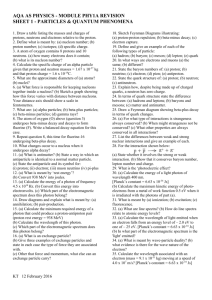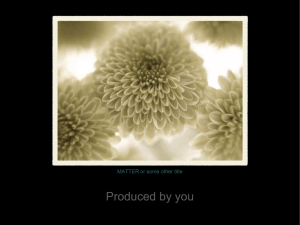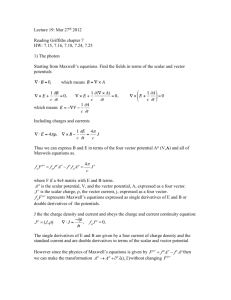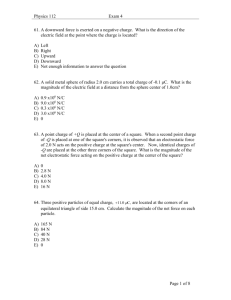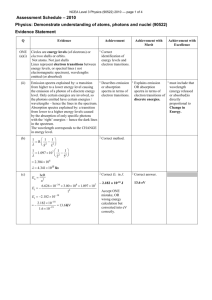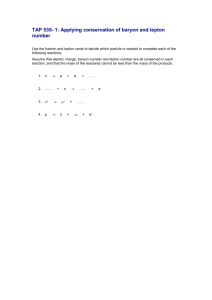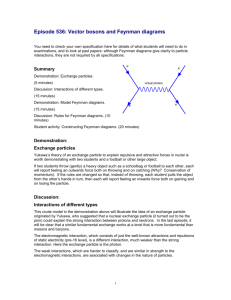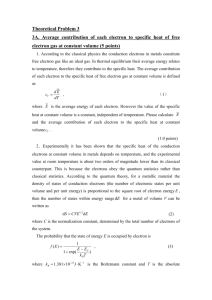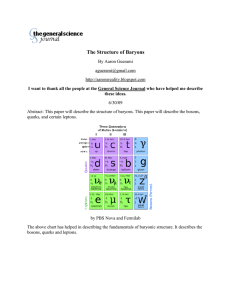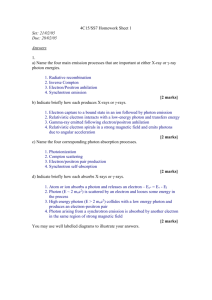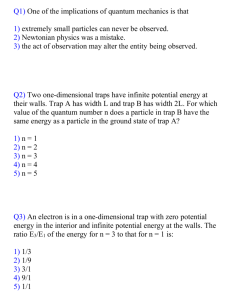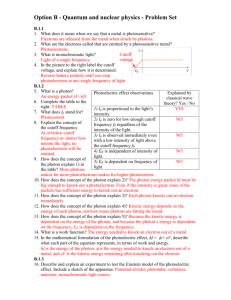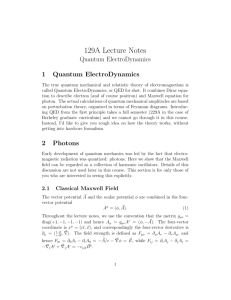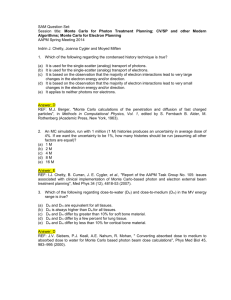TAP 536- 6: Feynman diagram student activities
advertisement
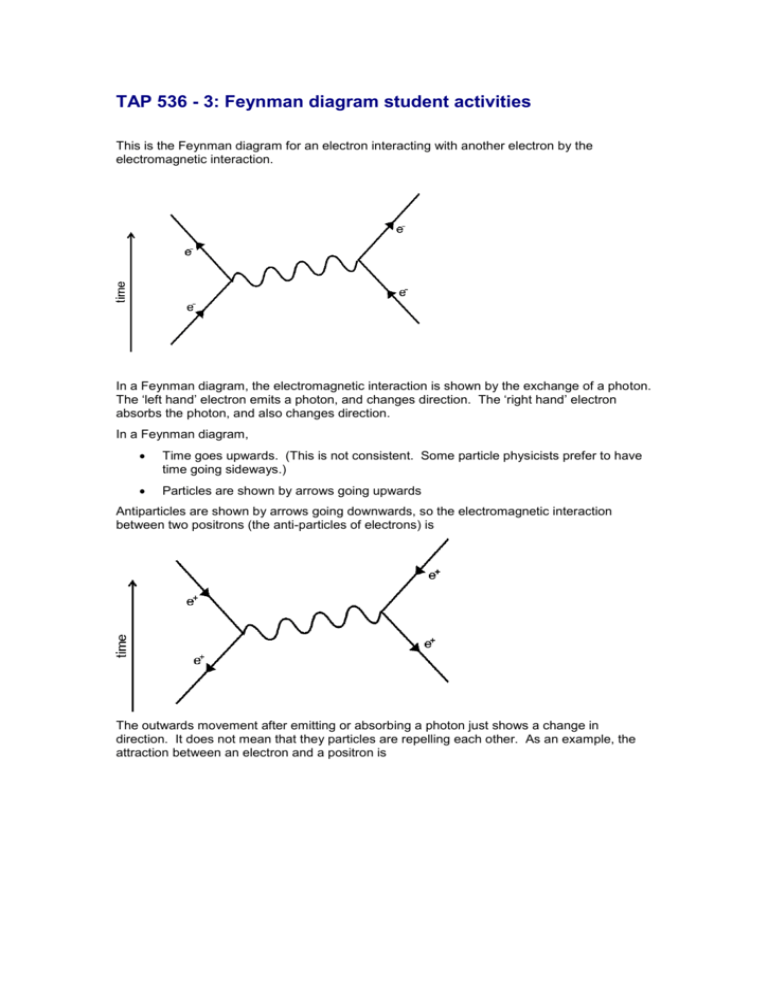
TAP 536 - 3: Feynman diagram student activities This is the Feynman diagram for an electron interacting with another electron by the electromagnetic interaction. In a Feynman diagram, the electromagnetic interaction is shown by the exchange of a photon. The ‘left hand’ electron emits a photon, and changes direction. The ‘right hand’ electron absorbs the photon, and also changes direction. In a Feynman diagram, Time goes upwards. (This is not consistent. Some particle physicists prefer to have time going sideways.) Particles are shown by arrows going upwards Antiparticles are shown by arrows going downwards, so the electromagnetic interaction between two positrons (the anti-particles of electrons) is The outwards movement after emitting or absorbing a photon just shows a change in direction. It does not mean that they particles are repelling each other. As an example, the attraction between an electron and a positron is The photon (wavy line) in the electromagnetic interaction is called a vector boson. Vector – carries the interaction Bosons – the type of particles that carry interactions. In the weak interaction, there are three vector bosons: the W +, W - and Z0 bosons. On Feynman diagrams, these are shown by dotted lines. The first two weak interaction bosons are charged, and are emitted when the ‘left hand’ particle changes its charge. If a proton turns into a neutron, for example, it emits a W +. You have the following cards Four ‘left hand’ cards, similar to the electron in the third example above One ‘middle’ card to serve as the vector boson (dotted) Four ‘right hand’ cards, similar to the positron in the third example above. Three vector boson labels: W +, W - and Z0 to put on top of the ‘middle’ card. 1. Use these cards to construct four possible weak interactions. Make sure that your reaction conserves charge as well as baryon number and lepton number. 2. Label each diagram with one of these titles: 3. Beta-minus decay Beta-plus decay Electron capture Neutrino-neutron collision For each one, write the equation. Answers and worked solutions 2. Beta-minus decay Beta-plus decay Electron capture Neutrino-neutron collision It is worth emphasising how the diagrams show conservation of baryon number (upward arrow head before and after the vertex on the baryon path), conservation of lepton number (upward arrow head before and after the vertex for the electron capture and the neutrinoneutron collision, or no lepton becoming and upward and a downward arrow after for the two beta decays) and conservation of charge, including the vector boson, reading from left to right. 3. n p + e- + ebar p n + e+ + e p + e- n + e e + n n + e

